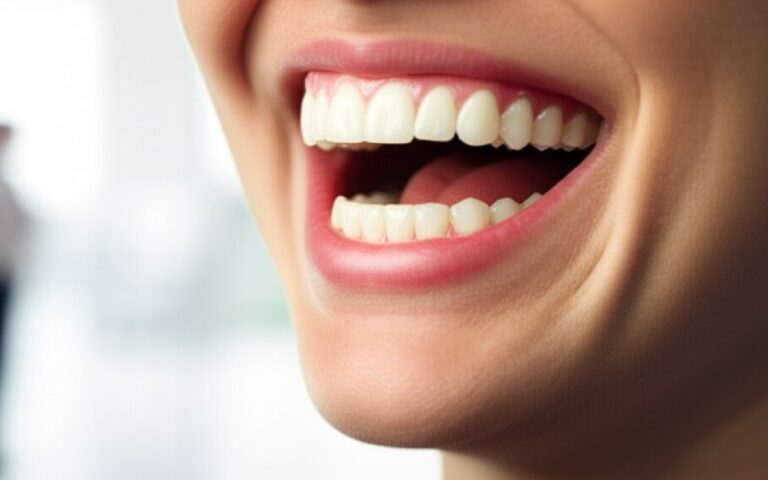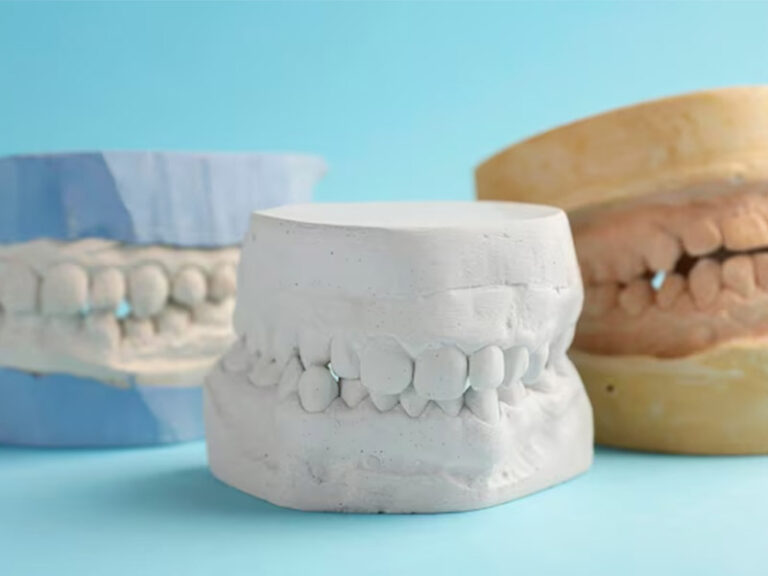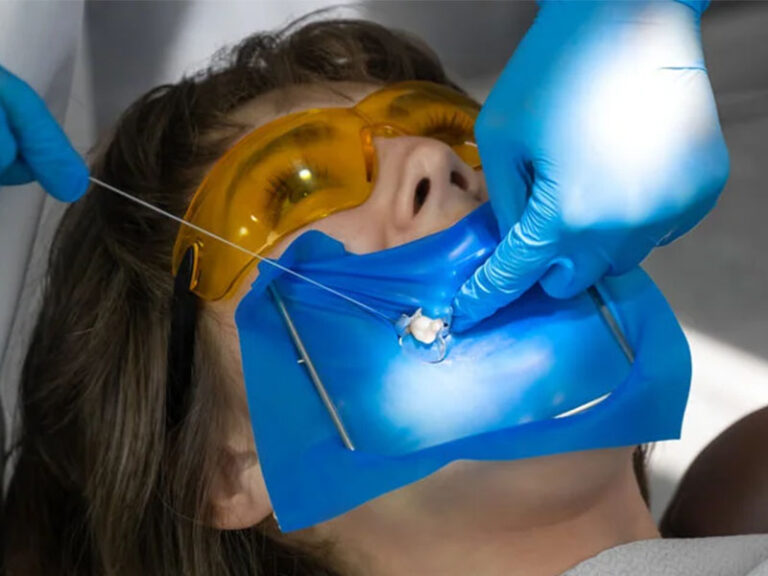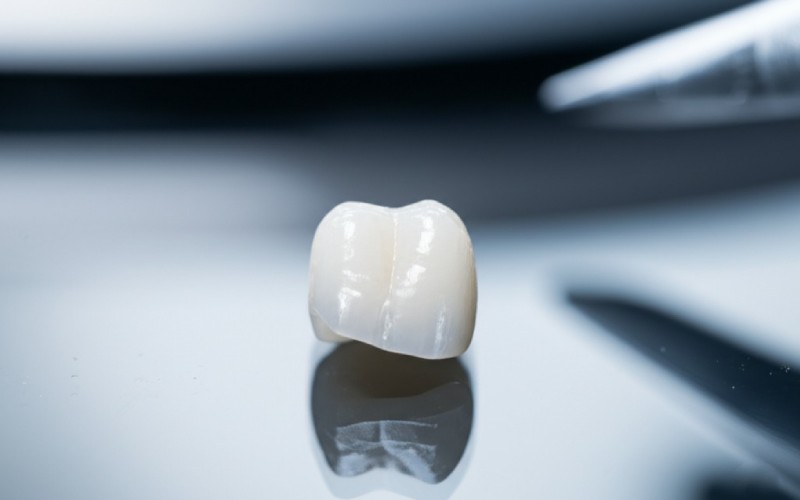
Guide du zircone stabilisé à l'yttrium : propriétés mécaniques et optiques pour les prothèses dentaires
One of the most amazing types of ceramic is yttria-stabilized zircone, or YSZ. This material changed dentistry. It is used to make strong and beautiful dental prostheses. But not all YSZ is the same. There are different kinds. Each kind has its own mechanical properties and optical properties. This article will help you understand them. We will look at how a little bit of a substance called yttrium oxide can stabilize and change a ceramic. You will learn why one type is super strong and another looks just like natural teeth. This is important for anyone who works with or receives dental restorations.
Table des matières
What is Yttria-Stabilized Zirconia (YSZ)?
Here was a ceramic that was as strong as some metals. YSZ is a special kind of zirconia ceramic. Pure zirconia is not very stable. It can crack easily when it gets hot or cold. To fix this, we add a little bit of another white powder called yttrium oxide (y2o3). This process is how we stabilize the material.
Adding yttrium oxide makes the zirconia strong and tough. The main structure of this new ceramic is called the tetragonal phase. This tetragonal shape is very important for its strength. We often see YSZ used in dental prostheses because it is strong, white, and safe for the body. This is called biocompatibility. The amount of yttrium oxide we add changes the properties of zirconia a lot. This gives us different kinds of YSZ for different jobs.
Why Do We Need to Stabilize Zirconia to Make it Useful?
Pure zirconia cracks easily when it cools down. This is because of something called phase transformation. Zirconia has different forms, or phases. When it is very hot, it is in a cubic phase. When it cools, it wants to change to a monoclinic phase. This change in shape causes a lot of stress. The stress makes the ceramic weak and full of cracks.
This is where yttrium oxide (y2o3) comes in. The yttria content helps to stabilize the material. It traps the zirconia in its strong tetragonal phase, even at room temperature. This stops the bad phase transformation from happening. This makes the yttria-stabilized zirconia very strong and reliable. Without yttria content, zirconia would be useless for things like dental crowns. This stability is also important to prevent low-temperature degradation, where the material can get weak over time in a wet place, like a mouth. This process is also called hydrothermal aging.
How Does Yttria Content Change the Mechanical Properties?
The amount of yttria we add is very important. We measure it in mol percent. For many years, the most common type of YSZ was 3Y-TZP. This means it has 3 mol percent yttria. This ceramic has amazing mechanical properties. It has very high flexural strength and high fracture toughness. Flexural strength is how much you can bend it before it breaks. 3Y-TZP is great for dental prostheses in the back of the mouth, where you chew with a lot of force.
But there is a trade-off. While 3Y-TZP is strong, it is not very pretty. It is very white and opaque, which means light cannot pass through it. So, scientists made a new kind of yttria-stabilized zirconia. This kind is called 5Y-PSZ. It has 5 mol percent yttria. This higher yttria content makes the mechanical properties a bit lower. The flexural strength is not as high. However, the optical properties are much better. It lets more light pass through, so it looks more like natural teeth.
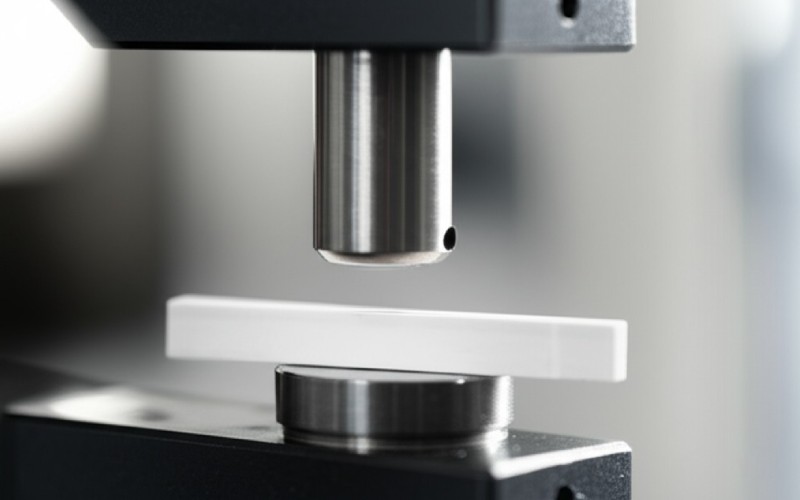
What is So Special About Fracture Toughness in YSZ?
Fracture toughness is one of the most incredible things about yttria-stabilized zirconia. Think of it as the material’s superpower. Fracture toughness means how well a material can stop a crack from growing. Most ceramic materials have very low fracture toughness. If you get a small crack in a dinner plate, it breaks very easily. YSZ is different.
When a tiny crack starts to form in YSZ, something magical happens at the tip of the crack. The stress from the crack causes the stable tetragonal grains to change into the monoclinic phase right at that spot. This monoclinic phase takes up more space. It squeezes the crack shut and stops it from growing. This makes YSZ very durable. It gives the material great mechanical resistance to breaking. This is why y-tzp ceramics are so trusted for dental restorations that need to last a long time. The high fracture toughness is a key part of its success.
Can YSZ Look Like Natural Teeth? A Look at Optical Properties.
For a long time, the answer was “not really.” The first type of yttria-stabilized zirconia, 3Y-TZP, was too opaque. It had a low contrast ratio, meaning it looked like a flat, solid white. This was because of its microstructure. The small grain size and the pure tetragonal phase scattered a lot of light. This made it look less like natural teeth, which have some translucency.
This all changed with the new zirconia materials like 5Y-PSZ. The higher yttria content (5 mol percent) creates a mix of tetragonal grains and cubic phase grains. The cubic phase is very important for looks. It has a structure that lets light pass through it easily. This gives the material a higher translucency. The light can go into the ceramic and bounce around, just like in a real tooth. This gives it a beautiful, natural look. We can measure this with tests that check reflectance and opacity. The improved optical and mechanical properties make these newer YSZ types great for front teeth.

What is Multilayer Yttria-Stabilized Zirconia?
Multilayer yttria-stabilized zirconia is one of the smartest ideas in dentistry. It solves the problem of choosing between strength and beauty. A multilayer zirconia block is like a cake with different layers. These are often sold as zirconia multilayer blocks. Each of the zirconia layers has different zirconia compositions.
The layer on the inside, near the base of the tooth, is like 3Y-TZP. It has a low yttria content, so it has very high flexural strength and fracture toughness. This makes the restorative crown very strong. The layers on the outside, at the top of the tooth, are like 5Y-PSZ. They have a higher yttria content. These layers have amazing optical properties and look very natural. This combination gives you the best of both worlds. You get the strength you need from the strong core and the beauty you want from the translucent outer layers. This is why ceramics for monolithic dental crown applications now often use multilayer zirconia.
How Do We Test YSZ? A Simple Look at X-Ray Diffraction.
To make sure a YSZ block has the right properties, we have to test it. We can’t just look at it. One of the most important tools we use is x-ray diffraction (XRD). It sounds complicated, but the idea is simple. We shoot a tiny, safe beam of X-rays at a small piece of the ceramic. The crystalline structure inside the YSZ bounces the X-rays back in a special pattern.
This pattern, called an xrd diffractogram, is like a fingerprint for the material. It tells us exactly what phases are inside. We can see how much of the material is tetragonal, how much is cubic phase, and if there is any bad monoclinic phase. Using x-ray diffraction, we can check the quality of the yttria-stabilized zirconia. This helps us know if the mechanical properties and translucency will be what we expect. We can compare different yttria-stabilized zirconia ceramics with great precision.
What is Quantification and Why Does it Matter?
Getting the pattern from x-ray diffraction is the first step. The next step is quantification. This just means “to count something.” We need to count how much of each phase is in the YSZ. Is it 90% tetragonal and 10% cubic phase? Or is it 50/50? This quantification is very important because the amount of each phase controls the mechanical properties and optical properties.
To do this, we use a special math method called Rietveld refinement. The Rietveld refinement method takes the complex pattern from the XRD test and gives us exact numbers. It can tell us the precise percentage of the tetragonal, cubic, and monoclinic phases. Thanks to Rietveld refinement, we can be very sure about the material’s makeup. This helps us simulate how the material will act and ensures that the yttria-stabilized zirconia ceramics for monolithic crowns are safe and effective.
How Important is Specimen Preparation for Testing?
In my experience, good test results start with good specimen preparation. You can have the best testing machine in the world, but if your sample is bad, your results will be bad. To test the flexural strength and fracture toughness of yttria-stabilized zirconia, we have to make small, perfect bars from the ceramic block. This often involves careful cutting and polishing.
Then, the zirconia samples need to go through compaction. Sometimes a uniaxial press is used to compact the powder before it becomes a solid block. After that, the samples were sintered. Sintering is when we bake the ceramic at a very high temperature. The sintering temperature and how long we bake it affects the final grain size and microstructure. A smaller grain size often means better mechanical properties. If specimen preparation is not done with precision, the tests will not be accurate, and we might see statistically significant differences that are not real.
Which YSZ Should Be Used for Different Dental Prostheses?
So, how do we choose the right YSZ? It all depends on the job. We have two types of choices based on the needs. If you need a crown for a back tooth, like a molar (mol), you need maximum strength. These teeth do a lot of chewing. For this, a monolithic zirconia crown made from 3Y-TZP is a great choice. It has the best mechanical strength and fracture toughness. The look is less important in the back of the mouth. These are the best zirconia ceramics for monolithic dental work where strength is key.
If you need a crown for a front tooth, beauty is the most important thing. You want it to match the other natural teeth. Here, a crown made from 5Y-PSZ or a multilayer zirconia block is the best choice. These materials offer great translucency of different yttria-stabilized zirconia. The lower flexural strength is okay because front teeth do not have the same chewing force as a mol. When we compare the materials, significant differences were observed in both strength and looks. Choosing the right one makes for a successful and happy outcome in prosthetics.
Summary: Key Things to Remember
- Yttria-Stabilized Zirconia (YSZ) is a strong ceramic used for dental prostheses. Yttria content is added to stabilize it.
- Low yttria (3 mol%) YSZ is very strong with high fracture toughness but looks opaque. It is good for back teeth.
- High yttria (5 mol%) YSZ is less strong but has better optical properties. It looks like natural teeth and is good for the front.
- Multilayer zirconia combines strong and beautiful layers in one block for the best results.
- The amazing fracture toughness of YSZ comes from a process called phase transformation, where the tetragonal structure stops cracks from growing.
- Testing with x-ray diffraction and Rietveld refinement helps us check the quality and quantification of the YSZ.

